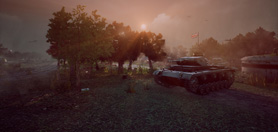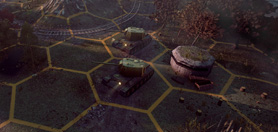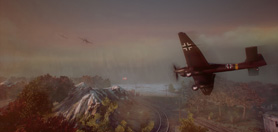The Blitzkrieg dive bomber Stuka Ju-87
This aircraft was considered to be one of the triumph’s symbols of a German military machine in the early War. It fitted perfectly into the general concept of the Luftwaffe operations under conditions of Blitzkrieg. The German air mission was, first of all, the close air support of fast advancing motorized units and the “Stuka” coped perfectly with it. Bombing was carried out by the Stuka approximately at the height of 450 metres, while diving exactly at an angle of 90 degrees earthward. That allowed to deliver a bomb if not directly into the enemy trench, at least very close to it. The impact error was no more than 30 metres.
Anti-tank clusters filled with seventyfour-kilogramme bombs were used for this purpose. During the operation “Barbarossa “the Ju-87 effectively helped to break the counterattacks of numerous Soviet tanks. The dive bombers with 37mm guns, the projectiles of which pierced the upper tank armour, appeared afterwards.
The dive bomber Stuka appeared to be very effective in fighting with ships. Due to not bad bomb tonnage – 1000 (in some cases up to 1800) kg - the aircraft could carry heavy bombs, capable of sinking even a large ship. By the way, Hans-Ulrich Rudel, acknowledged as the best pilot of the Ju-87, became famous just for sinking the Soviet battleship “Marat” in September 1941.
The Stuka’s strength was in its weakness. The angular form and nonretractable landing gear, helping the Ju-87 not to accelerate very much while diving, determined the dive bomber’s low speed and not high air characteristics. While the Luftwaffe had an absolute air domination, the Stukas could terrorize the enemy relatively lawlessly. But as soon as the German air domination disappeared, the Ju-87 began to suffer huge losses. By the way, due to the same reason, they couldn’t show their worth properly in the battle of England- the British fighter airplanes put up a sturdy resistance.
At the end of the war the Stukas were replaced by the assault modifications of the fighter airplane “Focke-Wulf “190 A, which were not engaged in bombing but had lethal machine-gun armament.


